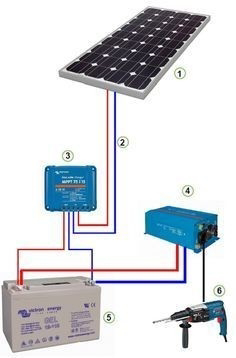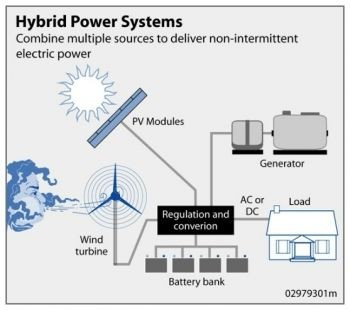Welcome to SparkED, your ultimate destination for all things engineering, science, and innovation! Our blog is a vibrant platform dedicated to showcasing the latest advancements, groundbreaking research, and fascinating discoveries in the world of electrical engineering and beyond. At SparkED, we believe in the power of knowledge and its ability to ignite extraordinary ideas. Our team of passionate writers and researchers is committed to bringing you captivating articles.
Sunday, 23 April 2023
Electrical Engineering
 At SparkED, we strongly believe in supporting and promoting the work of young researchers and scientists. We are interested in featuring and showcasing the groundbreaking studies, experiments, and ideas of emerging talents who are pushing the boundaries of knowledge and innovation.
At SparkED, we strongly believe in supporting and promoting the work of young researchers and scientists. We are interested in featuring and showcasing the groundbreaking studies, experiments, and ideas of emerging talents who are pushing the boundaries of knowledge and innovation.
Wednesday, 19 April 2023
Benefits of dedicated power line from substation to a Hospital
 At SparkED, we strongly believe in supporting and promoting the work of young researchers and scientists. We are interested in featuring and showcasing the groundbreaking studies, experiments, and ideas of emerging talents who are pushing the boundaries of knowledge and innovation.
At SparkED, we strongly believe in supporting and promoting the work of young researchers and scientists. We are interested in featuring and showcasing the groundbreaking studies, experiments, and ideas of emerging talents who are pushing the boundaries of knowledge and innovation.
5KW solar system design for home
 At SparkED, we strongly believe in supporting and promoting the work of young researchers and scientists. We are interested in featuring and showcasing the groundbreaking studies, experiments, and ideas of emerging talents who are pushing the boundaries of knowledge and innovation.
At SparkED, we strongly believe in supporting and promoting the work of young researchers and scientists. We are interested in featuring and showcasing the groundbreaking studies, experiments, and ideas of emerging talents who are pushing the boundaries of knowledge and innovation.
Tuesday, 18 April 2023
Five 5 reliable energy sources
Energy.gov - The official website of the U.S. Department of Energy provides updates on policy, technology, and research related to energy.
Bloomberg New Energy Finance - A research organization that provides data-driven analysis on the energy market.
Energy News Network - A non-profit news organization that covers the latest energy news in the United States.
OilPrice.com - A news and analysis website that covers the global energy market, including oil, gas, and renewable energy.
Renewable Energy World - A website that focuses on news and analysis related to renewable energy, including solar, wind, and geothermal.
 At SparkED, we strongly believe in supporting and promoting the work of young researchers and scientists. We are interested in featuring and showcasing the groundbreaking studies, experiments, and ideas of emerging talents who are pushing the boundaries of knowledge and innovation.
At SparkED, we strongly believe in supporting and promoting the work of young researchers and scientists. We are interested in featuring and showcasing the groundbreaking studies, experiments, and ideas of emerging talents who are pushing the boundaries of knowledge and innovation.
Monday, 17 April 2023
5 KW solar system design
A 5 kW solar system typically consists of around 15-20 solar panels, depending on the panel's efficiency and wattage. To determine the exact number of panels required, we need to know the panel's wattage and efficiency.
For the purpose of this example, let's assume we are using 300W panels with an efficiency of 18%. In this case, we would need around 17 solar panels to achieve a total power output of 5 kW.
Next, we need to consider the inverter. The inverter is responsible for converting the DC electricity generated by the solar panels into AC electricity that can be used in your home or business. For a 5 kW solar system, you would need an inverter with a capacity of at least 5 kW.
In addition to the panels and inverter, you will also need a mounting system to secure the panels to your roof or ground. The type of mounting system required will depend on the type of roof or ground surface and the local weather conditions.
Finally, you will need a monitoring system to track the performance of your solar system and ensure that it is generating the expected amount of power.
Please note that this is a basic example, and the exact components required for your solar system will depend on your specific energy needs, location, and other factors. It is always best to consult with a professional solar installer to design and install a solar system that meets your specific requirements.
 At SparkED, we strongly believe in supporting and promoting the work of young researchers and scientists. We are interested in featuring and showcasing the groundbreaking studies, experiments, and ideas of emerging talents who are pushing the boundaries of knowledge and innovation.
At SparkED, we strongly believe in supporting and promoting the work of young researchers and scientists. We are interested in featuring and showcasing the groundbreaking studies, experiments, and ideas of emerging talents who are pushing the boundaries of knowledge and innovation.
How can a hybrid system provides power needs to a hospital?
Increased reliability: Hospitals require a constant and reliable source of power to ensure that medical equipment and devices operate properly. A hybrid power system can provide backup power during power outages or grid failures, reducing the risk of disruptions in critical operations.
Cost savings: Hospitals are among the largest consumers of electricity, and energy costs can be a significant expense. A hybrid power system can help reduce energy costs by utilizing renewable energy sources, such as solar or wind power, to supplement or replace grid electricity.
Environmental sustainability: Hospitals have a significant carbon footprint due to their energy use and waste generation. A hybrid power system can help reduce a hospital's greenhouse gas emissions by utilizing renewable energy sources and reducing reliance on fossil fuels.
Increased energy independence: A hybrid power system can provide a hospital with greater energy independence by reducing its reliance on the grid. This can help hospitals operate more self-sufficiently and reduce their vulnerability to power disruptions or price fluctuations.
Improved community resilience: Hospitals play a critical role in emergency response and disaster management. A hybrid power system can help improve a hospital's resilience during disasters or emergencies by ensuring that critical operations can continue even when the grid is down. This can also benefit the broader community by providing a reliable source of power during emergencies.
Overall, a hybrid power system can provide hospitals with a range of benefits, including increased reliability, cost savings, environmental sustainability, energy independence, and improved community resilience.
 At SparkED, we strongly believe in supporting and promoting the work of young researchers and scientists. We are interested in featuring and showcasing the groundbreaking studies, experiments, and ideas of emerging talents who are pushing the boundaries of knowledge and innovation.
At SparkED, we strongly believe in supporting and promoting the work of young researchers and scientists. We are interested in featuring and showcasing the groundbreaking studies, experiments, and ideas of emerging talents who are pushing the boundaries of knowledge and innovation.
Sunday, 16 April 2023
Germany shutdown it's last 3 nuclear power plants
Why Germany shutdown it's nuclear power plants?
Germany decided to shut down its nuclear power plants after the Fukushima nuclear disaster in Japan in 2011. This disaster led to a reevaluation of nuclear power as a safe and sustainable energy source, and Germany's government decided to phase out nuclear energy and focus on renewable energy sources instead.
In 2011, the German government announced plans to shut down all nuclear power plants by 2022. The decision was based on concerns about the safety of nuclear power plants, the potential for nuclear accidents, and the long-term storage of nuclear waste.
Germany has been a leader in the development and implementation of renewable energy sources, such as wind and solar power. The country aims to generate 65% of its electricity from renewable sources by 2030 and has made significant progress in achieving this goal.
While the decision to phase out nuclear power has been controversial, Germany has shown that it is possible to transition to a renewable energy system and reduce dependence on fossil fuels.
 At SparkED, we strongly believe in supporting and promoting the work of young researchers and scientists. We are interested in featuring and showcasing the groundbreaking studies, experiments, and ideas of emerging talents who are pushing the boundaries of knowledge and innovation.
At SparkED, we strongly believe in supporting and promoting the work of young researchers and scientists. We are interested in featuring and showcasing the groundbreaking studies, experiments, and ideas of emerging talents who are pushing the boundaries of knowledge and innovation.
-
Transformers are rated in kVA (kilovolt-amperes) because they supply both active (real) and reactive power, and their losses dep...
-
Why Grounding Wires Are Not Insulated? Grounding wires, also known as earthing wires, are left uninsulated for safety reasons. Here are some...
-
In a three-phase system, the voltage between two phases is not simply the sum of the individual phase voltages (220V + 220V = 44...















